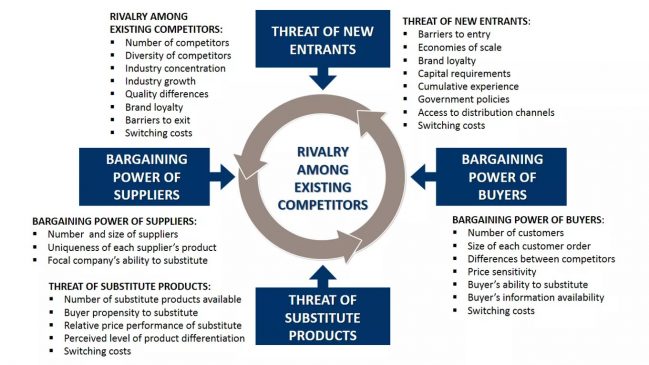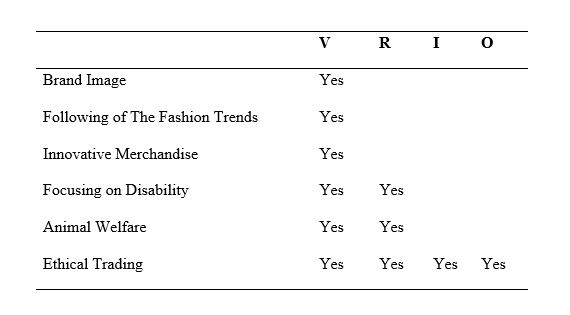Section 1. Mission, vision, and stakeholders – ASOS
Being a renowned fashion and beauty retailer in the world, ASOS has specifically designed mission and goals for ASOS customers. The mission of ASOS has been made clearer by the executive members as being world’s best online fashion and beauty retailer and shopping destination for the stylish and fashion-loving people of the 20-somethings (Madtolive); Thus, ASOS’s mission is “to be the world’s leading online shopping destination for the fashion-lovers of 20-somethings.”
ASOS has focused on the following characteristics or components of its business to be made its mission:
- World’s leading online retailer
- Products for the fashion-lovers
- The age factor of the ASOS customers
The “world’s leading online retailer” component expresses the global reach and leading capabilities of the company. The provision of “products for the fashion-lovers” focuses on the major reason of being of the As Seen on Screen PLC, as the name defines that it is made for the individuals which have the urge to be up-to-date and fashionable just like the stars and celebrities on the screen. The “age factor of the customer” is described to depict the age for which firm works. As the founder of ASOS, Nick Robertson, during the domestic expansion of the company, also said that “She’s 23, better looking than average, she loves to turn heads, Saturday night is her biggest night of the week. She’s definitely not married, and she just loves going out”. Until now, the firm focuses on the 20-something age group who are young, get aspirations from stars and celebrities, fashion-lovers and like to have fun.
As per the values of the company, the vision is “to be the world’s best customer-centric organization that provides quality products to the fashionistas online”. ASOS has focused on the following characteristics or components of its business to be made its vision:
- Worldwide Reach
- ASOS customers prioritization
- Quality of its products
- The diverse range and in-the-style products
The “worldwide reach” component of the vision statement is about being a leader in the international E-commerce market. The company believes in keeping the customer first and considering him as a vital stakeholder in the online retailing business. The “quality” component focuses on the provision of high-quality products with no compromise on this factor. In addition to that, the provision of “diverse and in-the-style products” is also considered mandatory by the firm.
The vision and mission statement of the ASOS possesses strong characteristics that specify a firm’s marketing mix, and the target market approaches. These statements support the sustainable competitive advantages of the firm as they include the following:
- Offering service propositions and appealing products
- Environmental impacts
- Business transparency
- Philanthropy and community services
As described in their values and goals, ASOS has sustained its competitive edges by providing competitive (i.e., high quality and reasonably priced) products and commodious services (i.e., speedy or free delivery, free return policy). For the company, fashion with integrity describes operating and managing the business efficiently and transparently, so the customers can use the products and have full knowledge about it. They should be satisfied with buying from a trustworthy and responsible platform that is actively engaged in maximizing customer’s benefits and eliminating the negative impacts and reducing the online shopping risks (Gaming). Moreover, the biggest impact on the environment was the carbon emissions of during product deliveries to the customers and waste from the packaging of the products. Whereas, ASOS has announced that it has been certified as a Carbon Neutral Organization as an apprehension of its initiatives towards the reduction of the carbon dioxide emission. Thus, being an environmentally friendly firm is a sustainable competitive edge of ASOS.
Section 2. Scenarios and industry analysis – ASOS
As per the case, the fashion industry has been through many ups and downs throughout its history. The approach to be used here is the Porter’s Five Force Analysis which is purely used to define the competitiveness of a market and how the profitability of a business is determined by its competitive nature. To achieve this, the following framework draws the five factors, termed as “The Porter’s Five Forces.”
These forces are as follows:
- The threat of new entrants in the market
- Competitive rivalry
- Buying power of customers
- Buying power of suppliers
- The threat of product substitutions

As per the case study, the business environment of the fashion industry has often been very complex and thus, required holistic solutions. The success of a firm does not only depend upon its own management and operations but also on the industry in which it operates. Thus, this five-force analysis would assist us in comprehending the relative strength of all the key players.
The competition within an industry is strongly influenced by the structure of its industry and the strategies applied and possessed by the company. The competition is deeply rooted in the basic structure of an organization and its overall industry and it also keeps on increasing by the performance of a firm’s competitors. The strength of competition among the industry is calculated by the five forces whose collective power and potential determine an industry’s returns and profits. If the barriers to entering a market are very high, then the returns on investment are also greater; Thus, established companies want to restrict new entrants from entering into the already existing market.
In the case study, the history has been divided among certain eras, so we would do the Porter’s Five Force Analysis accordingly. Fashion retail companies and online fashion specialists like ASOS, my-wardrobe, NEXT, Net-a-Porter, MANGO, Missguided, Marks & Spencer PLC, Amazon, Boohoo, and Topshop have been mentioned to be the leading market leaders.
The threat to ASOS of new entrants in the market
As discussed that ASOS was expected to improve as something new to this industry, so this force is considered somewhat little in the fashion industry. Notwithstanding, new entrants may discover versatile and unique ways to introduce their own products (no matter they have some exceptionality or not), and in that capacity, they might try to establish their brands novel.
As the fashion brand, NEXT has reportedly originated in the year 1864, it had threats from the new entries as competitors. Thus, in that condition, the fashion industry’s business is at ‘high risk and high reward’ for new candidates — it’s not very hard to get a foot in the entryway and trying to copy or duplicate others.
Rivalry among competitors
If we examine the fashion business with regards to the competition, it’s quite fascinating. There is a lot of retailers, fundamentally offering similar brands but there are some brands that charge high rates for presenting their ideal brands. In this regard, the pace of development is quite slow, therefore, the market is getting full of fundamentally similar items. Consequently, the fashion industry is a troublesome business to get feet into, which is not uplifting news for the marketers and sellers.
According to exhibit 5 in the case study, ASOS was ranked on 14th number in top retail websites in the UK in December 2014. Thus, among its direct competitors, Amazon and NEXT acquired 1st and 12th position respectively, depicting strong competitive rivalry.
Bargaining power of ASOS customers
The bargaining efficiency of the customers was always a keen factor to be highlighted, who are powerful at their ends. It is always the choice of ASOS customers to buy the product of their personal choice, the peer’s suggestion, or be influenced by someone. They can switch the sellers or the brand because ASOS customers are always considered to be the king of the market. ASOS deals in the fashion industry, the buyer’s power is considered to be a temperately extensive power. Whereas, marketers also know that clothing and fashion industry has to influence the compaction of vendors and buyer’s selection approaches. The buyer will have plentiful elective areas to select for attire and minimal motivating force to remain with one specific organization, giving them a lot of backhanded bargaining power.
Competitors compete against each other by practicing descending pressure on the costs and requesting higher quality or better execution, everything to the detriment of the business’ profitability.
Clients, the purchasers inside an industry, are in a solid position, because of the high extent of their purchases in an industry’s aggregate deals or additionally when institutionalized items are sold which can be acquired from each competitor and the conversion costs are low (ASOS Plc in Apparel and Footwear).
The bargaining power of the buyers gets observable through the provision of high standard services, high-quality products, and price cuts.
The higher the bargaining power of the buyers, the lower gets the attractiveness of that industry.
Bargaining power of ASOS suppliers
In the fashion retail industry, supplier power is moderately little and unimportant power. Most of the apparel firms source their products from third world makers who get just parts of the benefit. Suppliers have little control over the fashion business as, lamentably, they are superfluous and can simply be swapped out. Accordingly, input costs for this industry are moderately low and will remain there until the point when everything gets closed by the development gap at the global level.





